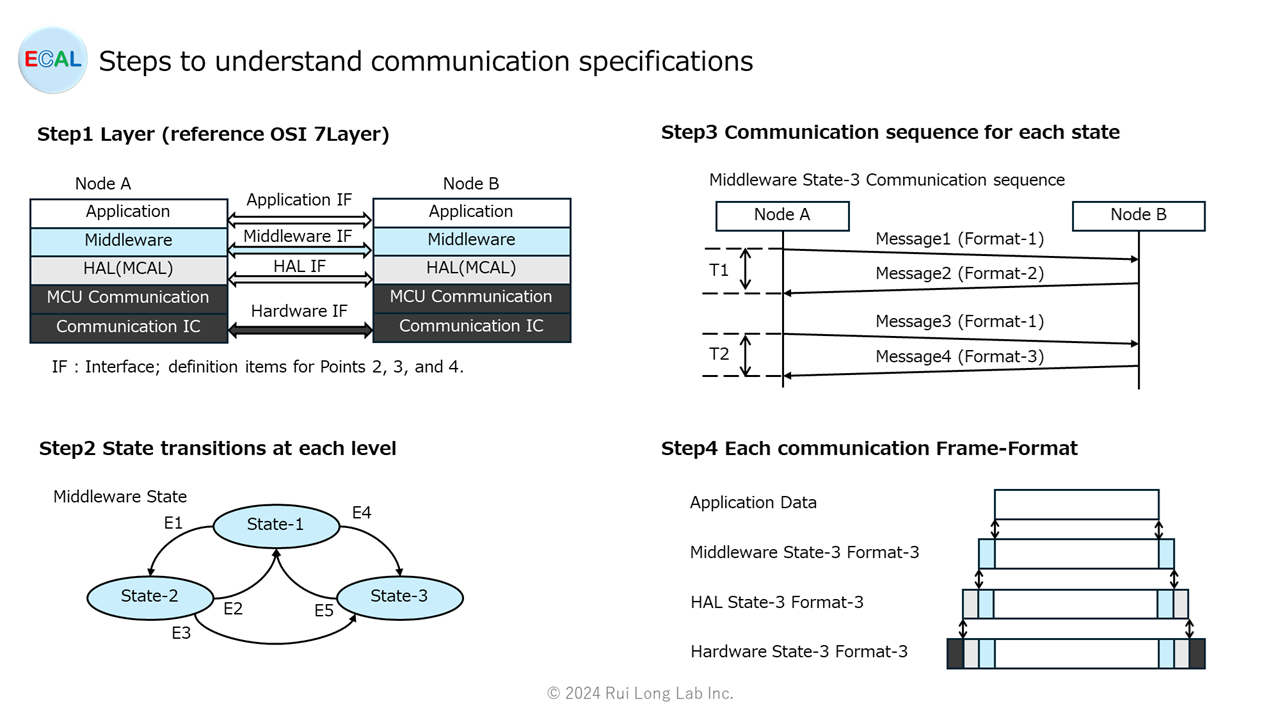This post describes how to understand communication specifications.
Communication specifications are easier to understand when specifications are organized in the following steps.
Step1 Layer (reference OSI 7Layer)
Communication specifications are divided into hierarchies with reference to the OSI 7 layers. In doing so, it is important that the nodes be in the same functional hierarchy as each other. ISO standard communication is often divided into standard Parts by hierarchy.
Point : Nodes must be in the same functional hierarchy as each other.
Step2 State transitions at each Layer
Analyze the state transitions at each layer to understand the states and transition conditions at each layer.
Point : Extraction of states and transition conditions for each layer.
Step3 Communication sequence for each state
Analyze the communication sequence for each state to understand the communication frame format and message content, the order in which messages are sent and received, and the time limits for sending and receiving.
Point : Extraction of communication frame format and message content, the order in which messages are sent and received, and the time limits for sending and receiving.
Step4 Each communication Frame-Format
Analyze and understand frame formats by dividing each communication frame format into layers. The received frame format analyzes the additional information at that layer and removes it before passing it to the upper layer. The transmit frame format generates and adds additional information for that hierarchy before passing it to the lower layers.
Point : Communication frame format by layer and extraction of additional information at each layer.

Software Design
When designing software from communication specifications, it will be easier to design the next design after organizing the points in steps 1 to 4 above.
Architectural design from the point of step 1
State transition design from the point of step 2
Sequence design from the point of step 3
Generation and analysis design of additional information from the point of step 4, and interface design between upper and lower layers
